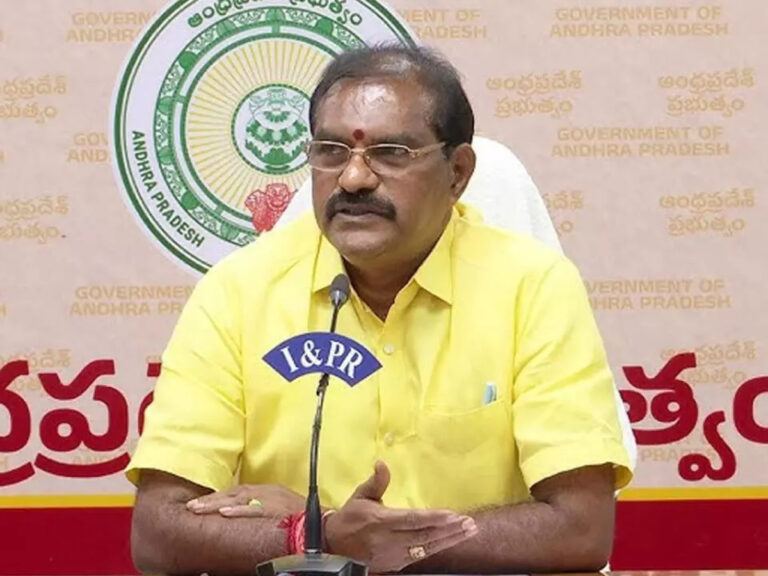Good Governance: Budameru Threat Averted – M9.news


Report on Budameru Flood Threat Averted: Alignment with Sustainable Development Goals

Introduction
The Government of Andhra Pradesh, under the leadership of Minister of Water Resources Nimmala Rama Naidu, has successfully completed critical infrastructure works aimed at mitigating flood risks associated with the Budameru river before the onset of the monsoon season. This report outlines the key interventions and their contributions to the United Nations Sustainable Development Goals (SDGs), particularly focusing on SDG 6 (Clean Water and Sanitation), SDG 11 (Sustainable Cities and Communities), and SDG 13 (Climate Action).
Key Infrastructure Developments
- Construction of Concrete (CC) Wall: A concrete wall was constructed along the Budameru river with an investment of Rs 23 crore. This structural measure aims to prevent flooding and protect local communities.
- Replacement of Budameru Regulator Gates: The old gates at the Budameru regulator in Velagameru were replaced with new ones, costing Rs 1.8 crore. This upgrade enhances water flow management and flood control.
- Bank Strengthening and Road Construction: A 7 km road was constructed between Velagaleru and Elaprolu to strengthen riverbanks, supporting SDG 9 (Industry, Innovation, and Infrastructure) and SDG 11.
- Cleaning of Budameru Drain: The Budameru drain, spanning 57 km from Enikepadu to Kolleru, was cleaned at a cost of Rs 9 crore to ensure efficient water flow towards the sea through Kolleru to Upputeru.
- Capacity Enhancement of Enikepadu Under Tunnel: A proposal has been made to increase the tunnel’s capacity from 4,000 cusecs to 20,000 cusecs, significantly improving floodwater management capabilities.
Impact on Sustainable Development Goals
- SDG 6 – Clean Water and Sanitation: The cleaning of the Budameru drain and improved water flow infrastructure contribute to better water quality and sanitation, reducing flood-related water contamination risks.
- SDG 11 – Sustainable Cities and Communities: Flood mitigation infrastructure enhances the resilience of Vijayawada and surrounding areas, safeguarding communities from natural disasters and promoting sustainable urban development.
- SDG 13 – Climate Action: Proactive flood control measures demonstrate adaptive strategies to climate-related hazards, reducing vulnerability to extreme weather events.
- SDG 9 – Industry, Innovation, and Infrastructure: The construction of roads and upgrading of water management systems reflect investments in resilient infrastructure.
Government Commitment and Future Outlook
The Government of Andhra Pradesh, led by former Chief Minister Chandrababu Naidu, has taken swift and effective steps to prevent a recurrence of the devastating Budameru floods experienced last year. These interventions underscore a commitment to sustainable development and disaster risk reduction ahead of the monsoon season.
References and Further Reading
- Is This Kavitha’s First Victory?
- Infosys Rejects Narayana Murthy’s 70-Hours Theory
- Heavy Investments Across AP, Thanks to CBN
1. Sustainable Development Goals (SDGs) Addressed or Connected
- SDG 6: Clean Water and Sanitation
- The article discusses the construction of a concrete wall, cleaning of drains, and increasing water flow capacity to prevent floods, which relates to ensuring availability and sustainable management of water.
- SDG 11: Sustainable Cities and Communities
- Measures to prevent flooding and strengthen infrastructure such as roads and water regulators contribute to making cities and human settlements inclusive, safe, resilient, and sustainable.
- SDG 13: Climate Action
- Efforts to avert flood disasters and manage water resources are part of climate adaptation and disaster risk reduction.
2. Specific Targets Under Those SDGs Identified
- SDG 6 Targets:
- 6.3: Improve water quality by reducing pollution, eliminating dumping, and minimizing release of hazardous chemicals and materials.
- 6.5: Implement integrated water resources management at all levels.
- 6.6: Protect and restore water-related ecosystems.
- SDG 11 Targets:
- 11.5: Significantly reduce the number of deaths and the number of people affected by disasters, including water-related disasters.
- 11.3: Enhance inclusive and sustainable urbanization and capacity for participatory, integrated and sustainable human settlement planning.
- SDG 13 Targets:
- 13.1: Strengthen resilience and adaptive capacity to climate-related hazards and natural disasters.
3. Indicators Mentioned or Implied to Measure Progress
- Indicators Related to SDG 6:
- 6.3.1: Proportion of wastewater safely treated (implied by cleaning and maintaining drains).
- 6.5.1: Degree of integrated water resources management implementation (implied by construction of CC wall, cleaning drains, and increasing tunnel capacity).
- Indicators Related to SDG 11:
- 11.5.1: Number of deaths, missing persons and directly affected persons attributed to disasters per 100,000 population (implied by efforts to prevent flood disasters).
- 11.5.2: Direct economic loss in relation to global GDP caused by disasters (implied by investment in infrastructure to prevent calamities).
- Indicators Related to SDG 13:
- 13.1.2: Number of countries with national and local disaster risk reduction strategies (implied by government’s proactive flood prevention measures).
4. Table of SDGs, Targets, and Indicators
| SDGs | Targets | Indicators |
|---|---|---|
| SDG 6: Clean Water and Sanitation |
|
|
| SDG 11: Sustainable Cities and Communities |
|
|
| SDG 13: Climate Action |
|
|
Source: m9.news








